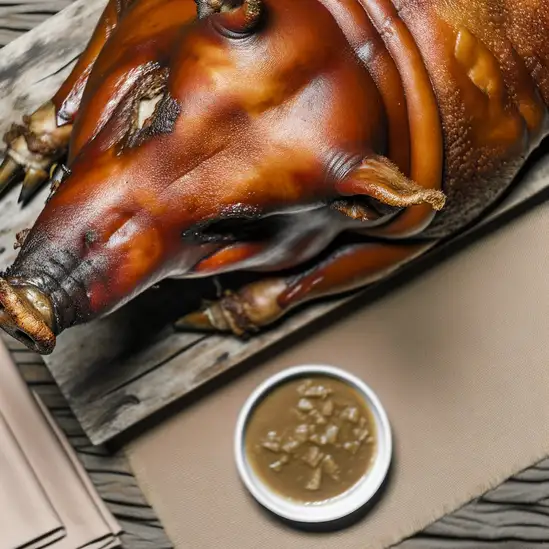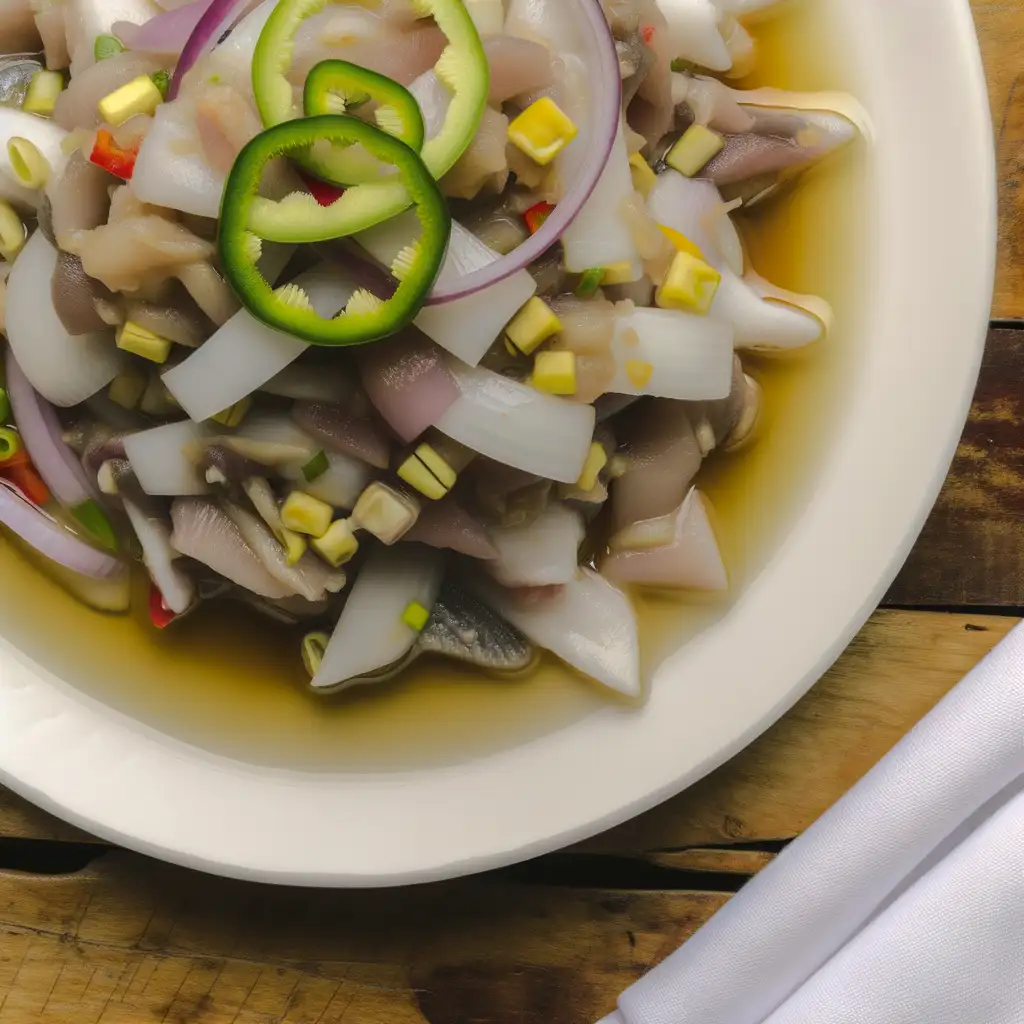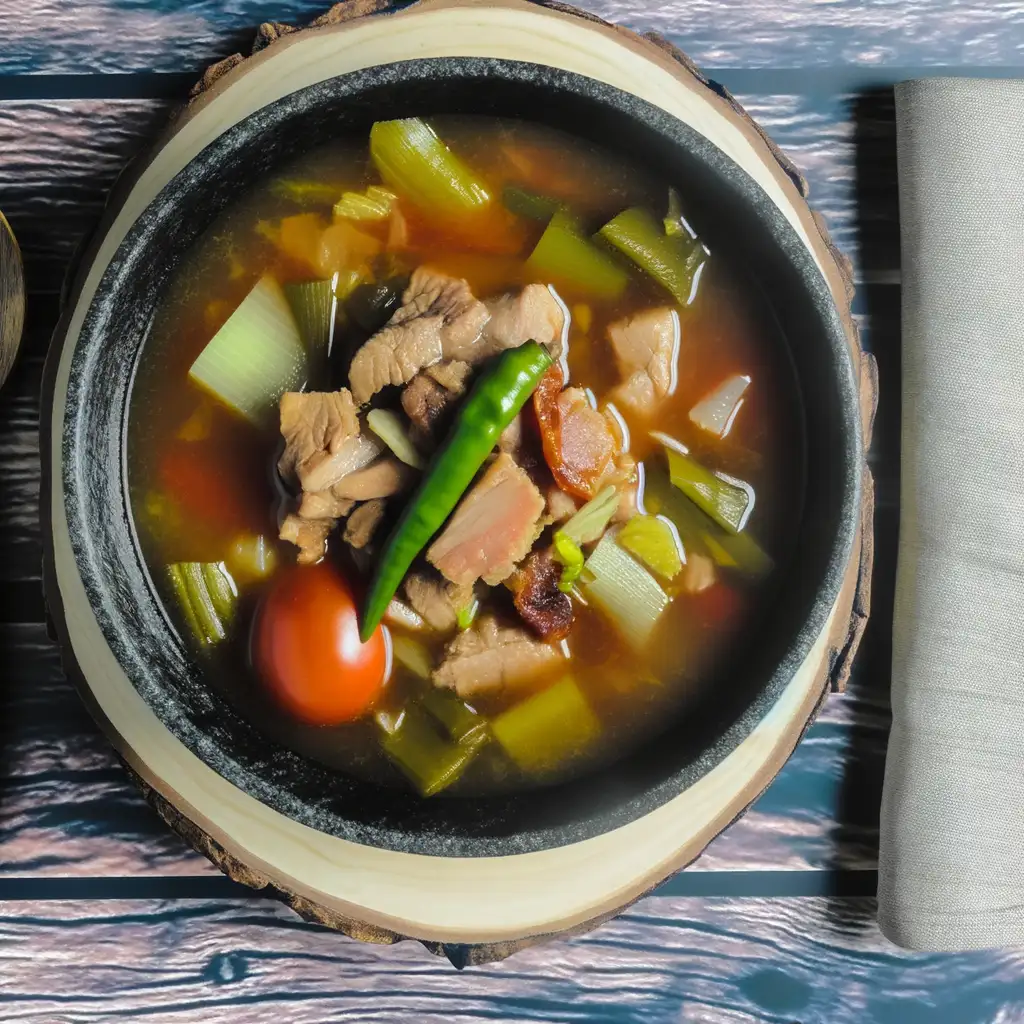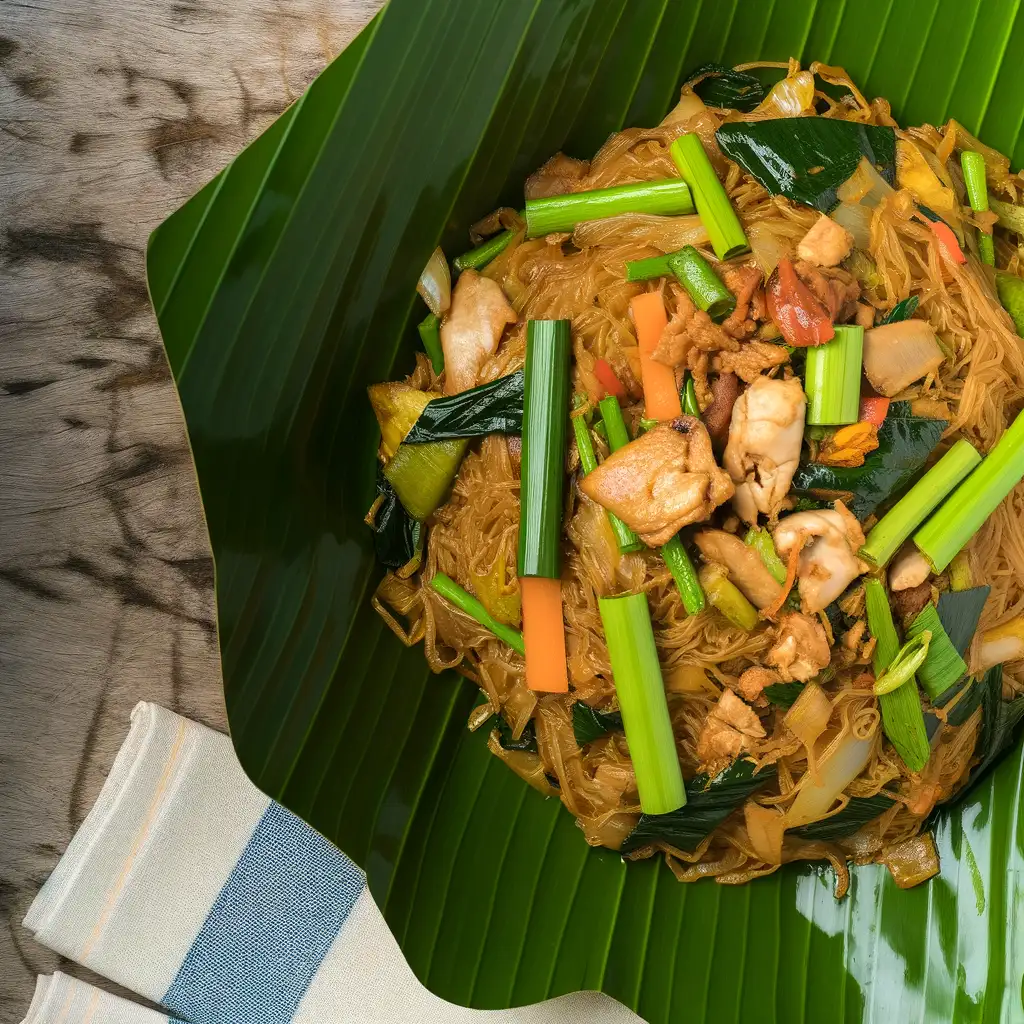



Imagine stepping into Surigao City and instantly feeling the gentle hum of island life wrap around you like a warm breeze. This place pulses with a laid-back energy that’s both refreshing and inviting. The air carries a salty tang from the nearby sea,mingling with the sweet aroma of fresh coconut and grilled seafood wafting from local eateries. Walking through the bustling markets,you’ll hear the lively chatter of vendors and the rhythmic clatter of jeepneys weaving through narrow streets,all underscored by the distant crash of waves. Surigao’s charm lies in its genuine warmth—people here greet you with bright smiles and stories about their beloved city. The culture is a vibrant mix of indigenous roots and maritime traditions,evident in the colorful festivals and the way the community comes alive during celebrations. Don’t miss trying the local kinilaw,a tangy,fresh ceviche that tastes like the ocean itself,or the sweet,sticky suman wrapped in banana leaves. What really sets Surigao apart is its gateway to natural wonders. Just a short ride away,you can explore surreal rock formations,dive into crystal-clear waters,or kayak through mangrove forests that feel untouched by time. Whether you’re wandering along the shore at sunset,feeling the sand between your toes,or chatting with fishermen mending their nets,Surigao City offers a soulful experience that stays with you long after you leave.
The information on this page is currently being reviewed by Tripkliq and should be used as a guide only
Eng word: Hello
Eng pronunciation: Koo-moos-tah
Local language: Kumusta
Eng word: Goodbye
Eng pronunciation: Ah-dee-os
Local language: Adios
Eng word: Thank you
Eng pronunciation: Sah-lah-maht
Local language: Salamat
Eng word: How much
Eng pronunciation: Tag-pee-lah
Local language: Tagpila
Eng word: Toilet
Eng pronunciation: Kah-seel-yas
Local language: Kasilyas
Eng word: Help me
Eng pronunciation: Tah-bahng-ee koh
Local language: Tabangi ko
Eng word: Yes
Eng pronunciation: Oh-oh
Local language: Oo
Eng word: No
Eng pronunciation: Dee-lee
Local language: Dili
Eng word: Excuse me
Eng pronunciation: Pah-sigh-loh-ah koh
Local language: Pasayloa ko
Surigao City was officially founded on August 31,1970. It has since grown into a bustling city known for its rich history and vibrant culture.
The Surigao Strait is historically significant as the site of the Battle of Surigao Strait during World War II, one of the last battleship-to-battleship engagements in history.
Surigao City was one of the first areas in Mindanao to be settled by the Spanish in the 16th century, making it a key location in the spread of Christianity in the region.
Built in 1754, the San Nicolas de Tolentino Cathedral is one of the oldest churches in Mindanao and a significant religious landmark in Surigao City.
The Surigao City Hall, constructed in the early 20th century, is a historical building that showcases American colonial architecture and serves as the center of local governance.
The Provincial Capitol building, established in 1901, is a historical landmark that represents the administrative heart of Surigao del Norte.
This memorial commemorates the Battle of Surigao Strait and honors the bravery of those who fought in this significant World War II naval battle.
Named after the famous Luneta Park in Manila, Surigao City's Luneta Park is a historical and recreational area that has been a gathering place for locals since the early 20th century.
The Surigao City Boulevard is a scenic coastal road that offers stunning views of the sea and has historical significance as a major development project that boosted local tourism.
In Surigao City, the most common Power Adaptor is Type A, Type B.



Roasted whole pig, famous for its crispy skin and tender meat, often served during special occasions.

A traditional Filipino dish made from fresh raw fish marinated in vinegar, citrus juices, and spices, often served as an appetizer.

Grilled tuna jaw, a local delicacy known for its rich flavor and tender meat, often served with dipping sauces.

A sour pork soup made with tamarind, tomatoes, and various vegetables, known for its tangy flavor.

A local noodle dish made with rice noodles, vegetables, and meat, typically served on a banana leaf.

A delicious coconut pie made with young coconut meat and a creamy filling, encased in a flaky crust.
.webp)
A type of seaweed that is often served fresh with vinegar, known for its unique texture and flavor.
Imagine stepping into a place where history hums through the streets and the ocean breeze carries the scent of salty adventure—that’s Cebu City for you. The moment you arrive,there’s this lively energy that wraps around you,a mix of old-world charm and modern buzz. You’ll find yourself wandering through colorful markets where the chatter of vendors blends with the aroma of freshly grilled street food—think sweet,smoky lechon sizzling over coals,tempting you at every corner.
Cebu’s character is a beautiful blend of the past and present. Ancient Spanish forts and centuries-old churches stand proudly alongside sleek cafes and vibrant street art. The city pulses with warmth,not just from the tropical sun but from the people who greet you with genuine smiles and stories. At night,the streets light up with music and laughter,and you can almost taste the festive spirit in the air.
What really makes Cebu unforgettable is how it feels alive in every sense. You can hear the waves crashing nearby,see the colorful jeepneys weaving through traffic,smell the tropical fruits at the market,and feel the warmth of the sun on your skin as you explore. It’s a place where culture,history,and everyday life blend seamlessly,inviting you to dive in and experience its vibrant soul firsthand.
If you ever find yourself craving a place where vibrant city life meets the gentle embrace of nature,Davao City is where you want to be. The moment you step off the plane,there’s this warm,welcoming energy that wraps around you—like the city itself is inviting you to slow down and savor every moment. The air carries a subtle mix of tropical blooms and the faint,salty hint of the nearby sea,while the streets buzz with a friendly hum of jeepneys and chatter in a melody of languages.
Walking through Davao,you’ll notice how the city wears its culture proudly. From the colorful street markets where vendors call out their fresh fruits and local delicacies,to the intricate weaves and crafts that tell stories of indigenous tribes,there’s a deep respect for heritage here. And the food? Oh,the food! Imagine biting into a juicy durian (if you’re brave enough),or savoring grilled tuna so fresh it practically melts in your mouth,all while sipping on a sweet,refreshing calamansi juice.
What really sets Davao apart is its balance—towering mountains and lush parks sit just a short drive from bustling urban spots. You can spend your morning hiking up Mount Apo,the Philippines’ highest peak,then wind down with a stroll along the riverwalk as the sun dips low,painting the sky in shades of orange and pink. It’s a city that feels alive but never rushed,where every corner invites you to explore,taste,and connect.
A historical city near Surigao,Butuan serves as a gateway to Agusan Marsh and offers a mix of cultural attractions and eco-tourism opportunities.
ExploreIf you ever find yourself craving a place where history hums softly alongside the buzz of everyday life,Iloilo City is where you want to be. The moment you step into its streets,there’s this warm,inviting energy—like the city is gently nudging you to slow down and savor its stories. You’ll notice the colonial-era buildings standing proudly beside modern cafes,their facades telling tales of centuries past. The air carries a subtle mix of salty sea breeze and the sweet aroma of freshly baked pan de sal,making every morning feel like a comforting embrace.
Walking through Iloilo,you’ll hear the lively chatter of locals,the clinking of glasses in cozy eateries,and the distant strum of guitars from street performers. The city’s character shines brightest in its festivals,especially the Dinagyang,where vibrant costumes and rhythmic drums fill the streets with infectious joy. But even on quieter days,the genuine smiles of Ilonggos and their easygoing hospitality make you feel like you’ve found a second home.
And then there’s the food—oh,the food! From the rich,savory batchoy served steaming hot in humble noodle shops to the sweet,creamy taste of fresh mangoes,every bite is a celebration of local flavors. Iloilo isn’t just a place to visit; it’s a place to experience,where every corner invites you to pause,breathe,and fall a little in love with its soul.
Tacloban City, located in the province of Leyte, is a vibrant urban center and the capital of the Eastern Visayas region in the Philippines. It is situated on the northeastern coast of Leyte Island, overlooking the Cancabato Bay and the San Juanico Strait. Tacloban is known for its resilient spirit, having endured natural calamities such as Typhoon Haiyan (Yolanda) in 2013, and for its historical significance as a center of commerce, education, and culture in the region. The city offers a mix of modern amenities and historical landmarks, including museums, parks, and churches, making it a compelling destination for travelers seeking both urban excitement and cultural exploration. With its warm hospitality, delicious cuisine, and stunning natural landscapes, Tacloban City welcomes visitors to experience the rich tapestry of Filipino culture and heritage.
ExploreIf you ever find yourself craving a place where nature’s calm meets a laid-back island spirit,Puerto Princesa is where you want to be. The moment you step off the plane,there’s this warm,salty breeze that wraps around you,carrying the faint scent of the sea and tropical blooms. It’s a city that doesn’t rush — people move with a gentle rhythm,and the streets hum softly with the chatter of locals and the occasional strum of a guitar from a nearby café. It feels like a breath of fresh air,both literally and figuratively.
What really makes Puerto Princesa stand out is its deep connection to nature. The famous Underground River is just the beginning — lush mangroves,crystal-clear waters,and vibrant coral reefs surround the city,inviting you to explore. You can hear the calls of exotic birds in the morning and watch fishermen bring in their catch as the sun dips low,painting the sky in shades of pink and orange. The food scene here is a delightful surprise too — fresh seafood grilled right on the beach,sweet tropical fruits bursting with flavor,and local dishes that tell stories of the sea and the land.
But beyond the sights and tastes,it’s the people who make Puerto Princesa unforgettable. Their warmth and genuine smiles make you feel like you’re not just visiting,but truly welcomed. Whether you’re wandering through the bustling market or sharing a laugh with a vendor,there’s a sense of community that lingers long after you leave. It’s a place that invites you to slow down,soak in the simple joys,and leave with a heart full of stories.
Scammers may install skimming devices on ATMs to steal card information from unsuspecting tourists withdrawing cash.
Tourists may be sold fake or low-quality souvenirs at high prices, with sellers claiming they are authentic or locally handcrafted.
Scammers may post fake listings for accommodations online, asking for advance payments or deposits, only for tourists to find out the property does not exist.
Scammers may approach tourists claiming to collect donations for a local charity or disaster relief, but the money goes into their pockets.
Individuals posing as tour guides may offer their services to tourists, only to provide little to no value or abandon them after receiving payment.
Some operators may charge excessive fees for island-hopping tours, especially if tourists do not compare prices or book through reputable agencies.
Some tricycle drivers may overcharge tourists, especially if they are unfamiliar with the standard rates. They may refuse to use the local fare system and demand inflated prices.
Tourists in crowded areas or markets may become targets for pickpockets who take advantage of distractions to steal wallets, phones, or other valuables.
Street vendors may inflate prices for food, drinks, or other items when they realize the buyer is a tourist unfamiliar with local costs.
Tourists may encounter unlicensed boat operators offering cheaper rates for island tours, but these boats may lack safety equipment and proper permits.
The Philippines has very strict drug laws, and this applies to Surigao City as well. The Comprehensive Dangerous Drugs Act of 2002 (Republic Act No. 9165) imposes severe penalties for the possession, use, and trafficking of illegal drugs. Penalties can include long prison sentences and even the death penalty for serious offenses. Tourists should be extremely cautious and avoid any involvement with illegal drugs.
In Surigao City, as in the rest of the Philippines, smoking is regulated under the Tobacco Regulation Act of 2003 (Republic Act No. 9211). Smoking is prohibited in public places such as schools, hospitals, public transportation terminals, and government offices. Designated smoking areas are allowed but must be in open spaces or separate rooms with proper ventilation. Violators can face fines and other penalties.
Vaping is regulated similarly to smoking in Surigao City. The use of electronic cigarettes is prohibited in places where smoking is banned. This includes public places, enclosed areas, and public transportation. The sale of vaping products to minors is also prohibited. Violators can face fines and other penalties.
What are other people saying about Surigao City?
Recent Social posts about Surigao City
There is nothing to show you for now.